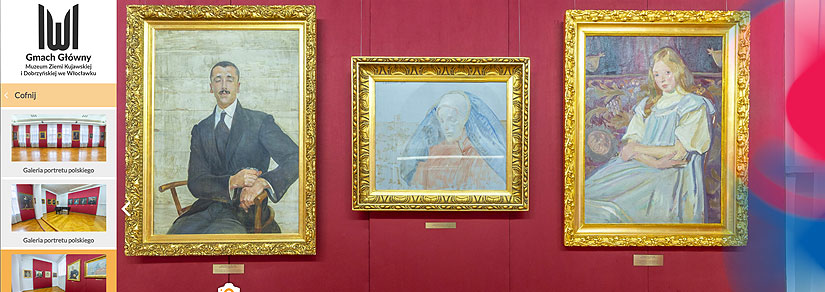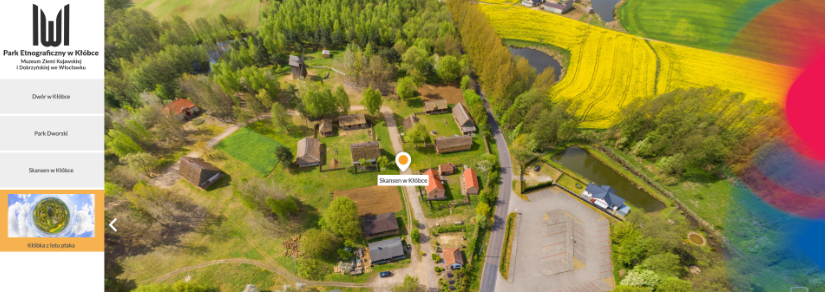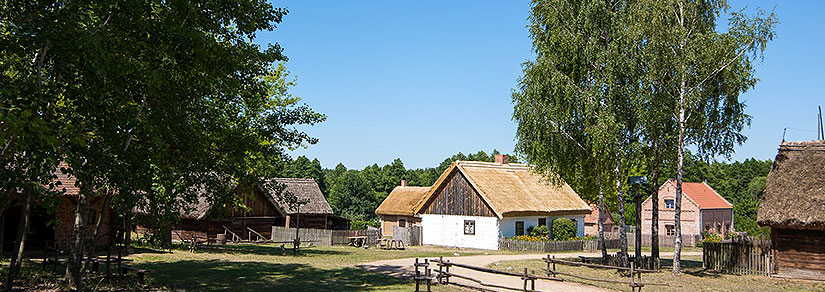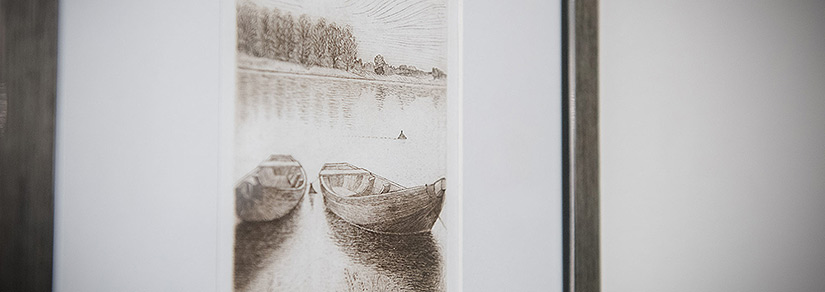
Wystawa czasowa „Ryszard Lewandowski. Grafika i rysunek”
where: Muzeum S. Noakowskiego when: 27.11 - 15.01.2023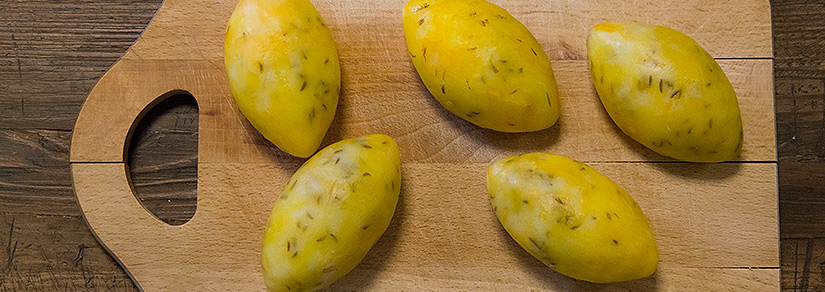
WYSTAWA CZASOWA „SMAKOWITE MLECZYWO, CZYLI TRADYCJA WARZENIA SERÓW W POLSKIEJ KUCHNI”
where: Muzeum Etnograficzne when: 18.11 - 23.04.2023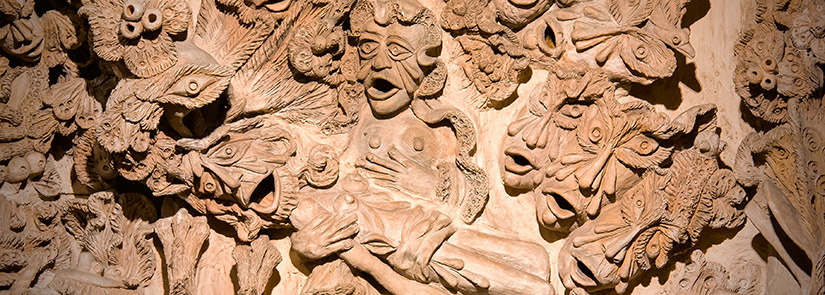
STANISLAW ZAGAJEWSKI’S CERAMIC SCULPTURE (1927-2008)
where: Zbiory Sztuki , ul. Zamcza 10/12, Włocławek when:
THE LIFE AND ARTISTIC WORK OF STANISLAW NOAKOWSKI (1867-1928)
where: Muzeum S. Noakowskiego , ul. Mickiewicza 6, Nieszawa when: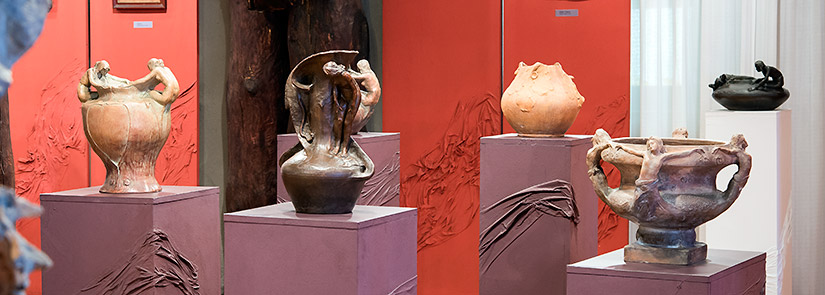
THE LIFE AND WORK OF WACLAW BEBNOWSKI (1865-1945)
where: Zbiory Sztuki , ul. Zamcza 10/12, Włocławek when:
LUDWIK BOUCHARD – TEACHER OF THE PICTURE OF STANISLAW NOAKOWSKI
where: Muzeum S. Noakowskiego , ul. Mickiewicza 6, Nieszawa when: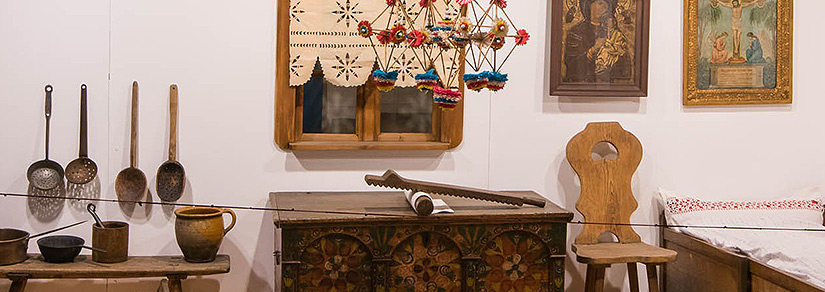
FOLC CULTURE OF KUJAWY AND DOBRZYN LAND
where: Muzeum Etnograficzne , ul. Bulwary im. Marszałka J. Piłsudskiego 6 when: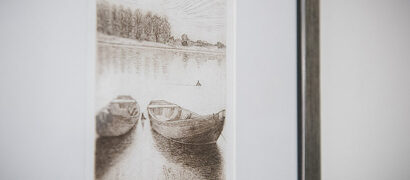
Wystawa czasowa „Ryszard Lewandowski. Grafika i rysunek”
when: 27.11 - 15.01.2023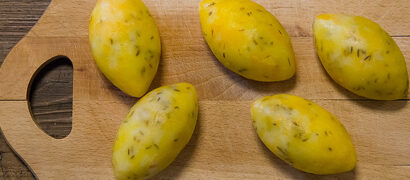
WYSTAWA CZASOWA „SMAKOWITE MLECZYWO, CZYLI TRADYCJA WARZENIA SERÓW W POLSKIEJ KUCHNI”
when: 18.11 - 23.04.2023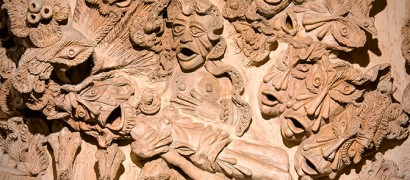
STANISLAW ZAGAJEWSKI’S CERAMIC SCULPTURE (1927-2008)
ul. Zamcza 10/12, Włocławek when:The exhibition of sculptures by Stanislaw Zagajewski – one of Poland`s and the world`s premier representatives of l`art brut – features works from his most interesting and creative period, 1966-1990. The religious and animal sculptures come solely from the Wloclawek Museum`s collection, which was started in 1966.
The exhibition includes the unique bas-relief compositions Zagajewski calls “altarpieces,” as well as free-standing sculptures and wall masks. The altarpieces and most religious sculptures were inspired by the Passion of Christ (Christ in a Crown of Thorns, The Man of Sorrows, the Pieta, Arma Christi). The Lamb of God altarpiece and the sculptures of The Lamb and The Pelican also refer to the sacrifice of Christ and the mystery of the Eucharist. The free-standing sculptures are mainly uncanny representations of homely and exotic animals: the stag, the roe, the bear, the elephant, or the sphinx. The large sculptures include vases covered with dense fantastic ornaments: writhing human figures, animals, birds, and natural ornaments. Another group of works are the small, multicolored glazed bird statues, mostly representing peacocks. Some of them are decorated with “bouquets” made of beads or plastic caps and wrappings strung on wire.
After the death of Stanislaw Zagajewski exhibition was enriched with photography that show artist and citations with parts of his statements that comes from different periods. Now, when artist has gone away, he still lives with us thanks to his sculptures. Visiting the exhibition, you can see movies on the big-size screen, that present artist working at his sculptures and telling about the art. You can also remind about the way he lived and how he was walking with pushchair and dogs true the streets of Wloclawek. Artistic of “Wloclawski Nikifor” is as the same interesting and original as his philosophy and way he was living. All those elements are inseparable and put together they are making the whole portrait of Stanislaw Zagajewski. (artist)
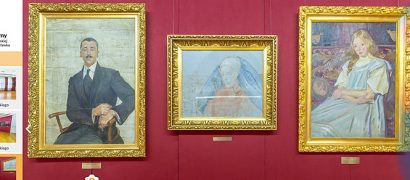
#MuzeumWdomu – WIRTUALNY SPACER – Gmach Główny
when:
THE LIFE AND ARTISTIC WORK OF STANISLAW NOAKOWSKI (1867-1928)
ul. Mickiewicza 6, Nieszawa when:Two halls on the ground floor are documenting life and creation of an outstanding theorist of architecture, pedagogue, drawer and painter Stanislaw Noakowski (1867-1928). The first part of the exhibition has biographical character and is placed in arranged notary office. The second part presents drawings and watercolors by Stanislaw Noakowski from 1916-1925. This part of exposition is located in reconstructed lounge from the seventies of 19th century.

THE LIFE AND WORK OF WACLAW BEBNOWSKI (1865-1945)
ul. Zamcza 10/12, Włocławek when:The exhibition presents the art of Waclaw Bebnowski and some objects associated with the artist. It includes the most interesting ceramic sculptures and functional objects from Poland`s largest collection, started at the Wloclawek Museum by the artist himself. A resident of Aleksandrow Kujawski, Bebnowski donated the first two sculptures to the Museum in 1935. The Museum began to acquire other works for the collection, which today consists of over 130 items, in 1965, primarily through purchases from Wloclawek, Ciechocinek, and Torun residents. After the first monographic exhibition in the Wloclawek Museum in 1979, the collection was considerably expanded through a large purchase from the sculptor`s daughter, Maria Fiszer.
The exhibition features figurative sculptures from 1913-1938: portraits, sacred sculptures, small animal statues. The majority of the works are applied art objects, such as vases, epergnes, or paper weights. In most of them Bebnowski`s uses his favorite art nouveau motifs, visible in the positions of naked nymphs, the long-haired female figures, and the ornaments inspired by the natural world or the art of the Far East. Each sculpture is covered in patina, usually imitating bronze casts.
In addition to sculptures, the exhibition includes Bebnowski`s watercolor and oil landscapes, drawings, and sketches. Several portraits illustrate the sculptor`s biography: a Biedermeier portrait of Waclaw Bebnowski`s father painted by one Tolinski in 1830; an art nouveau portrait of Bebnowski`s wife, Anna of the Golecki family, painted by Ignacy Pienkowski; and an oil portrait of Waclaw Bebnowski by E. Cwirko-Godycka. Of the few memorial objects in the Museum, a few documents from Bebnowski`s college years and some family photographs are on display. Several boards present a chronology of major events in the artist`s life.

#MuzeumWdomu – WIRTUALNY SPACER – Skansen w Kłóbce
when: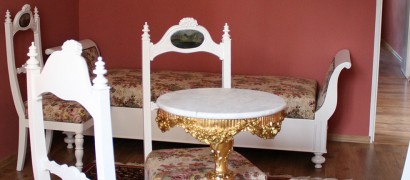
LUDWIK BOUCHARD – TEACHER OF THE PICTURE OF STANISLAW NOAKOWSKI
ul. Mickiewicza 6, Nieszawa when:On the first floor are located expositions devoted to the teacher of St. Noakowski – Ludwik Bouchard (1828-1912), art critic, painter and pedagogue. On the exposition we can find oil paintings, watercolors, drawings, ceramics and furniture designed by L. Bouchard. Like steady expositions on the ground floor, these were also created with a special care for rendering the climate of bourgeois house from the second half of 19th century.
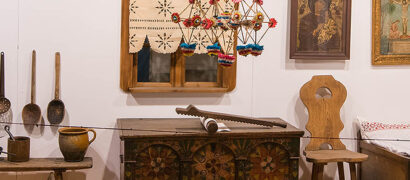
FOLC CULTURE OF KUJAWY AND DOBRZYN LAND
ul. Bulwary im. Marszałka J. Piłsudskiego 6 when:The exhibition occupies three floors of the historic granary. It presents village at the turn of the 19th/20th century and it shows the most important elements of non-existent folc culture. The issues are showned in following order.
Basic economy department, farming, breeding and fishing preceding the introduction to whole exhibition ilustrated by maps, information boards about historical influences on traditional culture of Kujawy and Dobrzyn Land. Main section – farming, presented by tools used for farming works (ploughs, harrows, listers, suede harrows, hand-seeders) and photograms showing cycle of farming works. At the second part of exhibition there are articles connected with breeding, incubation of poultry (baskets, bucks), with house processing industry (feeding trough), with using animals for farming (yoke), and transport (harness). Specificity of both regions, their riverside location and presence of lakes, accenting objects connected with fishing, which was the important way to get food. There is big river boat, nets and snares and fishing bucks. The exhibition is enriched by short texts and photograms thematically connected with presented sections.
In this part, exposition including five main crafts: pottery, blacksmith, cart-wrighting, cooperage, plaiting. In each section there are tools and craft articles, what helps visitors to imagine those days producers. Supplement of it are short texts and photograms of craftsmen at work. The presentation of craft in ending by carpentry showing tools of carpenters by ilustrated construction details. This part is enriched by many slides showned types of buildings and whole farm characteristic for Kujawy and Dobrzyn Land.
Exposition in this part presenting fragments of the equipment of house interior of Kujawy and Dobrzyn. This combination allows to see important differences in the look of furniture characteristic for both regions. Furthermore, there are small house tools connected with food preparation and cleanliness keeping. Both annexes are connected by “house altar”.Huge part of exposition is dedicated to festive folc clothes. There are male and female Kuyavian clothes from 19th century with accent on homespun and typical for region of Kujawy clothes from the turn of 19th/20th century. Whole exposition is replenished by iconographic materials, copies according to sketches of Wojciech Gerson from 19th century which are showing clothes of Kujawy and women`s headdress.
Rich collection of historic folk sculpture is presented, with presentation of Holy Mother Skepska imitated on “miraculous”, gothic figure of Mary from Marian Shrine from Skepe. Thanks to this monuments we have full review of workshops which are existing here and natural artists. Furthermore, there are images of crucified Christ and Saints (St.John of Nepomuk, St.Laurence, Antony of Padua).
The last part of exposition approaching still alived on Kujawy shrovetide customs. There are costumes and properties of dressed up shrovers where leading role had a horse, stork, bear and goat. Replenishment of exposition are musical instruments, typical for folk bands from Kujawy. Some of them (accordion, violin) accompanied to group of shrovers.

THE KUYAVIAN AND DOBRZYN VILLAGE 18TH – 20TH C.
Kłóbka when:Klobka is called “The Pearl of Kujawy” due to its location among hills, forests and lakes. In this charming landscape situates an open-air museum with over a dozen objects of rural architecture, the oldest of which come from the 18th century.
Except three farmhouses consisting of cottages, barns, pigsties, stables and granaries there are also old craftworkshops reconstructed in the museum – forge, oil mill with pottery and windmill. In the centre of an open-air museum there is an old inn, school building and firestation.
Various kinds of fences, wells, hives, dugouts and roadside shrines are complements of the landscape. A unique atmosphere is created by the yards with traditional varieties of flowers and alsoby farmlandsandorchardsamongwhich live domestic and farm animals.
At the museum, by the banking-up of Lubienka river there is a manor house from the middle of the 19th century where Maria Wodzinska lived. She was the only official fiancée of Fryderyk Chopin.
The climate of old residence is capturedin the interior of the manor house as well as life and work of Maria Wodzinska.
Additional attractions of the open-air museum are annual: the last Sunday of June, the first Sunday of August and the second Sunday of September folk festivals ‘Thelifeoftheoldvillage’.The traditional workshops and already forgotten activities come back to life then. To the rhythm of folk music, regional dances are shown. The main attractions of festivals are the maticperformances that illustrate old customs and solemnities.
LOCATION
The Open-air Museum in Klobka is located in the centre of Poland, 6km from motor way A1 junction near the trunk road 91 (80km north from Lodz and 25km south from Wloclawek). www.muzeum.wloclawek.pl

 PL
PL

